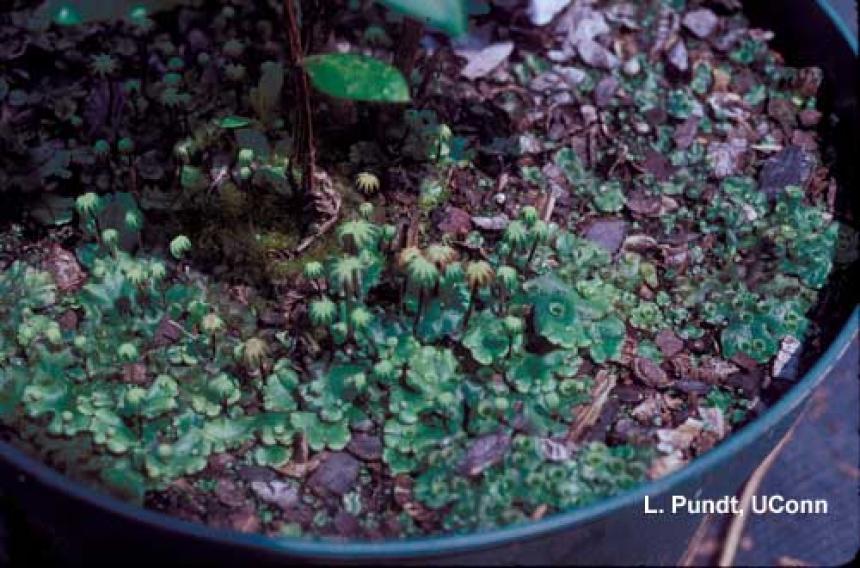Liverworts ( Marchantia polymorpha ) are branching, ribbon-like plants lacking distinct roots, stems and leaves. They reproduce by spores and vegetatively. Stalked, umbrella-like structures release spores. Small, bud-like branches that are produced in cup-like structures on the surface of the plant also help spread liverworts. Liverworts thrive in conditions of high fertility, moisture and high humidity and require moister conditions than mosses.
Inspect incoming plants for signs of liverworts and isolate infected plants. Clean and disinfect empty greenhouses to remove spores. Store growing media properly to prevent contamination.
Avoid overwatering crops and water according to plant need. Use of coarse textured mulch helps reduce surface moisture levels. Topdressing slow release fertilizerscontributes to increased fertility levels on the media surface and to the growth of liverworts. Proper plant spacing helps to reduce humidity levels. Liverworts lack true roots, so allowing the media to dry between watering, helps reduce their vigor.
Sodium carbonate peroxyhydrate (TerraCyte®) is labeled for the prevention and control of algae, moss, and liverworts. Terracyte® is water activated. For more information see message posted December 20, 2006.
